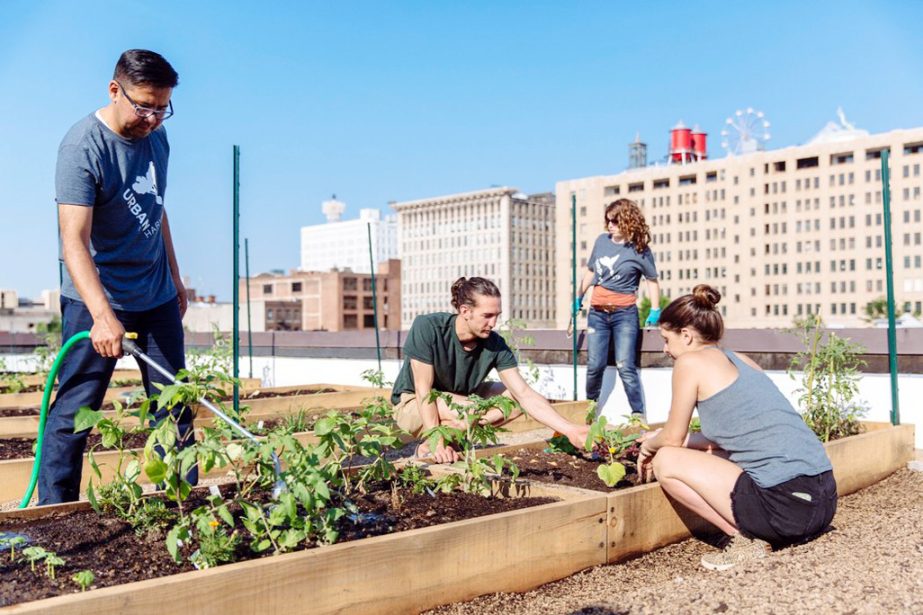
Life Desk :
In the urban concrete jungle, people are going vertical to get their spot of green by repurposing their terraces as kitchen gardens. Food entrepreneur and baker Kishi Arora has been growing spinach on her terrace along with other herbs. Organic food and kitchen garden expert Sangeeta Khanna grows lauki, karela and okra on her terrace. Khanna says that going organic and growing your own vegetables is what the ‘green conscious’ movement is all about. “Many companies and online groups offer help in setting up a terrace garden to facilitate the pot-to-plate trend,” she adds.
Soil curry
If you want a thriving terrace garden, picking the right soil is the first step. Don’t use normal garden soil. Use good quality potting mix for the healthy growth of plants. You can also prepare it yourself by composting everyday organic garbage from your home. Gardening entrepreneur Shabnum Kapur, who runs Khetify – a startup that helps convert your balcony or terrace into a farm – says that picking the right vegetables is important. “Grow vegetables that need less water. In summer, tori, brinjals and microgreens grow well. Avoid cherry tomatoes that need gallons of water,” she says.
Go vertical
Opt for a raised bed, which will help you grow more vegetables. But waterproof the terrace before starting. You can start with a pre-made farming kit for terraces, as offered by a Hyderabad-based startup Homecrop. The kit helps you grow four types of vegetables. To optimise space use hanging planters. Khanna says, “You can grow beans and gourds on walls and railings.”
One of the simplest things is to grow microgreens by planting them in small wooden sandboxes. Herbs like basil, rosemary, thyme, and veggies like lettuce, spinach, ginger grow well in sandboxes. Also you can join a gardening group for support, says Priyanka Amar Shah, of iKheti – another gardening startup that runs its own interactive groups and societies to encourage terrace gardening.
Care for your garden
1. Water regularly. Overwatering and under-watering can be fatal. Do your research on how much water each plant really requires.
2. Check plants for pests.
3. Cut and prune plants.
4. Make sure the plants get enough sun. In the hot summer months, provide an afternoon shade to the plants.
What to grow
Cucumbers, Radishes, Beans, Potatoes, Onions, Carrots, Beetroot, Lettuce, Garlic, Chillies, Peppers, Gourds, Eggplant (brinjal)
You can plant almost any vegetable in pots. Use large earthen pots. Avoid plastic pots, as they heat up and drain poorly.
In the urban concrete jungle, people are going vertical to get their spot of green by repurposing their terraces as kitchen gardens. Food entrepreneur and baker Kishi Arora has been growing spinach on her terrace along with other herbs. Organic food and kitchen garden expert Sangeeta Khanna grows lauki, karela and okra on her terrace. Khanna says that going organic and growing your own vegetables is what the ‘green conscious’ movement is all about. “Many companies and online groups offer help in setting up a terrace garden to facilitate the pot-to-plate trend,” she adds.
Soil curry
If you want a thriving terrace garden, picking the right soil is the first step. Don’t use normal garden soil. Use good quality potting mix for the healthy growth of plants. You can also prepare it yourself by composting everyday organic garbage from your home. Gardening entrepreneur Shabnum Kapur, who runs Khetify – a startup that helps convert your balcony or terrace into a farm – says that picking the right vegetables is important. “Grow vegetables that need less water. In summer, tori, brinjals and microgreens grow well. Avoid cherry tomatoes that need gallons of water,” she says.
Go vertical
Opt for a raised bed, which will help you grow more vegetables. But waterproof the terrace before starting. You can start with a pre-made farming kit for terraces, as offered by a Hyderabad-based startup Homecrop. The kit helps you grow four types of vegetables. To optimise space use hanging planters. Khanna says, “You can grow beans and gourds on walls and railings.”
One of the simplest things is to grow microgreens by planting them in small wooden sandboxes. Herbs like basil, rosemary, thyme, and veggies like lettuce, spinach, ginger grow well in sandboxes. Also you can join a gardening group for support, says Priyanka Amar Shah, of iKheti – another gardening startup that runs its own interactive groups and societies to encourage terrace gardening.
Care for your garden
1. Water regularly. Overwatering and under-watering can be fatal. Do your research on how much water each plant really requires.
2. Check plants for pests.
3. Cut and prune plants.
4. Make sure the plants get enough sun. In the hot summer months, provide an afternoon shade to the plants.
What to grow
Cucumbers, Radishes, Beans, Potatoes, Onions, Carrots, Beetroot, Lettuce, Garlic, Chillies, Peppers, Gourds, Eggplant (brinjal)
You can plant almost any vegetable in pots. Use large earthen pots. Avoid plastic pots, as they heat up and drain poorly.
-Internet

